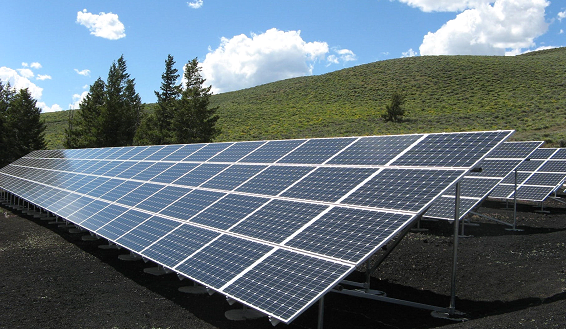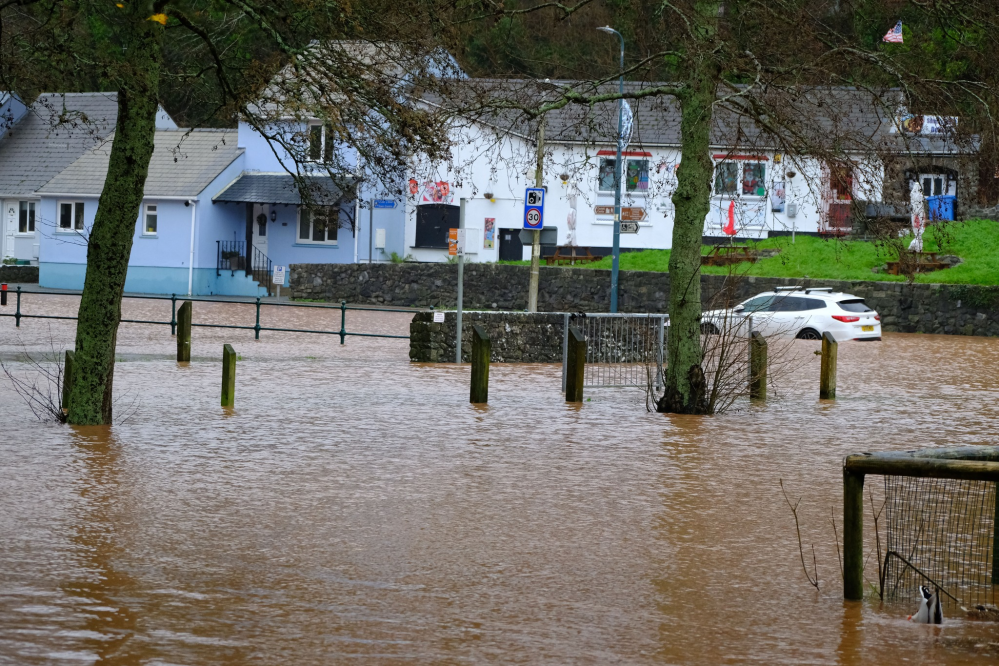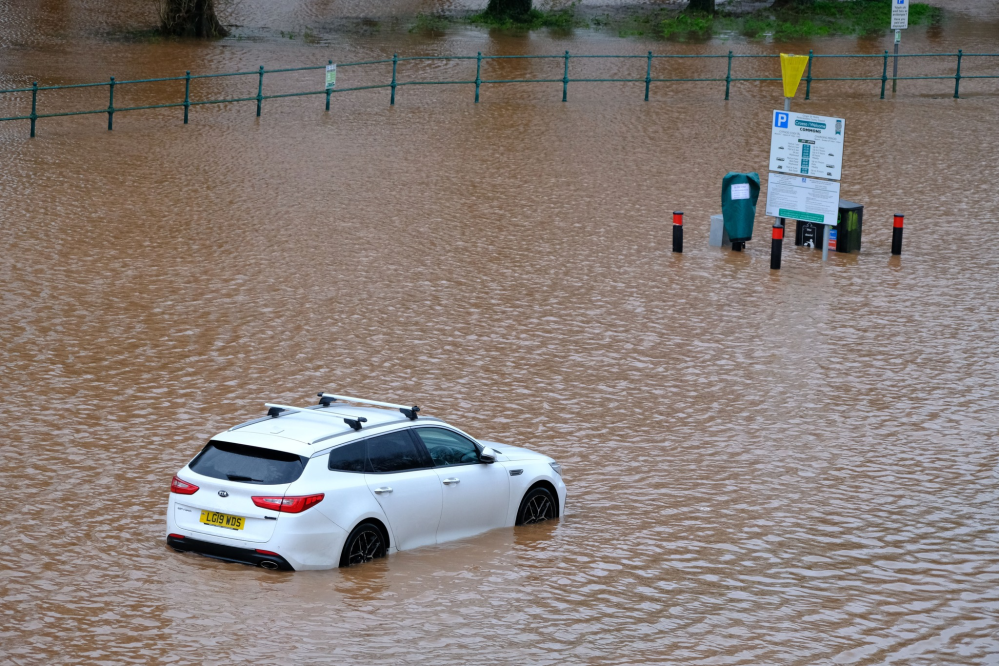Climate
How Welsh residents can use clean energy in their homes

In the next decade, Wales aims to reach 100% of its internal electricity demands through renewable sources. The climate change minister remains at the forefront of ensuring sustainable energy sources in the country.
One way Welsh residents can join in the effort to use clean energy is by adopting renewable energy sources in their homes. These renewable energy sources provide clean and efficient energy without negatively impacting the environment.
Furthermore, these eco-friendly energy sources save money spent on electricity. It aids Welsh residents living in sustainable homes while saving the environment. Let’s dive deep into finding how to transform your houses into energy-efficient and sustainable homes.
What Is It?
Clean energy is pure energy extracted from nature without any pollutants produced with its usage. This energy is highly beneficial for the environment as it doesn’t leave behind any pollutants. It harnesses nature’s power with sources including:
⦁ Sun energy
⦁ Wind
⦁ Water
⦁ Air
Unlike traditional, clean energy sources don’t release harmful pollutants into the air. Green energy, sourced from natural elements, has a key distinction.
Renewable energy from these clean sources comes from continually replenished resources. Thus, it ensures they never run out, unlike non-renewable sources like fossil fuels.
The essence of clean energy is generating power without any potential harm to the environment for citizens.
Choosing clean energy is good for the environment. It helps protect Wale’s natural resources and lowers the chances of environmental disasters.
Because Wale’s government invests heavily in clean energy sources, they can create stable power supplies, strengthening the country’s energy security.
How to Use Clean Energy Sources in Homes
Welsh residents are quickly adopting clean energy sources in their daily routines. Here is a look at some different clean energy sources for Welsh citizens to incorporate:
- Rooftop Solar Panels
The most common source of renewable energy is solar. It includes mounting solar panels on your rooftop to utilize the sun’s energy that gets converted into power. The more solar panels mounted on your rooftop, the more power it generates.
Additionally, homeowners can invest in lithium batteries as storage backups during nighttime or cloudy days. It ensures a continuous energy supply in your home, enough to power basic home appliances.
Homeowners can contribute the surplus electricity to the grid and earn compensation. It ensures a steady supply of energy in your house. This is the best option for users looking to homestead upcountry. - Tubular Skylights
Sometimes, you need to light up your house during the day. Clustered homes without a sufficient supply of natural light depend on lightning. It leads to increased energy bills and carbon footprint.
A natural way to light up your homes during sunny days is through these innovative tubular skylights. These skylights don’t create electricity but redirect free natural light into your home.
It’s a highly dependable system similar to a reliable paper writing service online since you know what you’re signing up for. It contains a dome of metal tubes running between the dome on the roof, with the diffuser mounted on the ceiling.
The inner tubing has a reflective coating reflecting natural sunlight into your home. These systems are easy to install. Also, they are highly rigid to fit into small spaces. Unfortunately, they tools can’t work during nighttime. - Wind Turbine
Wind turbines are an underrated source of clean energy for homeowners. Especially for ones looking for sustainable living options, harnessing wind power that converts kinetic energy into electricity. Thus, this reduces homeowner’s dependence on fossil fuels.
The market is full of small wind turbines suited for residential applications. Hence, homeowners can choose their preferred wind turbine size depending on their energy needs.
Moreover, most wind turbines occupy a maximum of 10 or 20 square feet of ground space, thus making them viable options for small residential homes. Unlike solar power, these turbines can generate electricity day and night on sunny and cloudy days. - Solar Water Heating
People in Wales are very interested in solar water heating systems because they are easy to use. These systems change the sun’s free energy into hot water. The good thing is that when experts set them up, they don’t need much looking after them.
Solar water heating systems comprise panels and tubes that gather solar energy, converting sunlight into heat.
Installing these systems ensures a steady supply of hot water throughout the year. To cope with winter, adding a boiler or immersion heater is necessary. Moreover, homeowners benefit from lower energy bills since solar energy is free.
Additionally, using solar water heating systems helps reduce one’s carbon footprint by lowering carbon dioxide emissions, contributing to a healthier planet.
Future of Wales’s Energy Consumption
In Wales, the future looks promising for sustainable living. The government is determined to satisfy all electricity needs with renewable sources. People generally agree that completely relying on renewable sources is better than relying on fossil fuels.
As Wales’ population keeps expanding, we see higher energy demand. The solution is turning to renewable sources and clean energy to meet this growing need sustainably.
The change to clean energy is precedented by local authorities crafting policies necessitating the usage of renewable energy. With more areas driving towards becoming energy-sufficient, governments and corporations are leading the way in fighting for renewable power.
Our dependence on fossil fuels for years has significantly impacted the climate. We are experiencing the effects of these practices, with global warming becoming a major talking point on the global stage.
Clean energy guarantees an avenue to alternate fossil fuels. The market has yet to fully explore the possibility of relying on renewable sources for daily demands. However, the conversation is happening at a rapid rate.
Final Takeaway
Wales began utilizing renewable energy to meet its internal electricity demands by 2035. Hence, locals should start opening up to sustainable homes relying on clean energy. These options are sustainable ways homeowners can incorporate their energy sufficiency without any adverse climate impacts.
Climate
Pembroke tidal flood defence work to continue to January

SIGNIFICANT issues with a part of Pembroke’s tidal barrage are not expected to be fully fixed before late January, councillors heard.
Pembroke councillors Aaron Carey and Jonathan Grimes submitted an urgent question heard at the December meeting of Pembrokeshire County Council, which said: “In light of the repeated flooding events across the county – including the recent overflow at Castle Pond and the acknowledgement by your own Coastal, Rivers & Drainage Team that the barrage tipping gate remains inoperable until mid-January can you explain what assessment has been made of the adequacy of our tidal outfall infrastructure in the face of current and projected future storm surges and sea-level rise?
“If no such assessment has yet been undertaken, will you commit now to commissioning an immediate structural and risk-capacity audit, with a report to full council within three months, and with proposals for funding any remedial works required — to avoid recurring damage and disruption to residents, highways, and public amenities?”
Responding to the urgent question, Cabinet Member for Residents Services Cllr Rhys Sinnett said a significant assessment of the Pembroke Tidal Barrage had already been undertaken over the past two years, with regular inspections.
He said “a comprehensive package of works” began in September which were due to be completed before Christmas but said there had been “significant issues” with the tipping gate hydraulic ram, with a significant overhaul now taking place, with reinstatement expected by late January.
He told members additional mitigation measures were now in place and, once works are completed, enhanced works will provide improved resilience and “long-term reliability,” with further reports due to come to Cabinet.
Cllr Carey and Cllr Grimes had also submitted a notice of motion saying: “That this council notes with concern the repeated and increasingly severe flooding experienced in our coastal, estuarial and river-fringe communities over recent weeks — in particular the flooding events affecting the Commons/Castle Pond area.
“That the council further notes that, according to correspondence from the Coastal, Rivers & Drainage Team Manager, the tipping gate at the barrage remains out of operation until mid-January due to mechanical issues; meanwhile high tide, heavy rain, wind-driven tidal surges and overspill at the sluice have combined to overwhelm the drainage/outfall infrastructure.
“That we recognise the current maintenance schedule (delayed ‘til after the summer season) and the justification given — but further that such planning failed to foresee the likelihood of severe winter storm and surge events, which climate change makes more frequent and more intense.
“That this council therefore calls on the Cabinet to commission an urgent review of:
- The adequacy of the current drainage/outfall and tidal-sluice infrastructure (barrage tipping gate, sluice/sluice-valve, flap valve, outfall capacity) for current and projected climate/tide conditions.
- The maintenance scheduling policy for coastal and estuarial flood-risk assets, with a view to ensuring critical maintenance is completed before winter high-tide / storm-surge season, rather than — as at present — being delayed until after summer for ‘recreational / biodiversity’ reasons.
“That, pending the outcome of the review, the council should allocate appropriate emergency capital funding to remediate the barrages / sluices / outfalls at risk of failure or blockage — to safeguard residents, properties, highways and public amenities from further flooding.
“That, further, this council resolves to publish a public flood-resilience plan for the county, identifying all coastal and river-fringe ‘hotspots,’ maintenance schedules, responsible teams, and a transparent timeline for upgrades or remedial works — so residents have clarity and confidence in flood prevention measures.”
The notice of motion itself will be considered by the council’s Cabinet at a later date.
Climate
Urgent calls for action on Pembroke Commons flooding

TWO PEMBROKESHIRE councillors have submitted an urgent call for action following recent heavy flooding in parts of Pembroke.
Pembroke councillors Aaron Carey and Jonathan Grimes have submitted an urgent notice of motion ahead of tomorrow’s December 12 meeting of Pembrokeshire County Council following heavy flooding in the town’s Commons and Castle Pond area.
The notice of motion covers six points.
“That this council notes with concern the repeated and increasingly severe flooding experienced in our coastal, estuarial and river-fringe communities over recent weeks — in particular the flooding events affecting the Commons/Castle Pond area.
“That the council further notes that, according to correspondence from the Coastal, Rivers & Drainage Team Manager, the tipping gate at the barrage remains out of operation until mid-January due to mechanical issues; meanwhile high tide, heavy rain, wind-driven tidal surges and overspill at the sluice have combined to overwhelm the drainage/outfall infrastructure.
“That we recognise the current maintenance schedule (delayed till after the summer season) and the justification given — but further that such planning failed to foresee the likelihood of severe winter storm and surge events, which climate change makes more frequent and more intense.
“That this council therefore calls on the Cabinet to commission an urgent review of:
- The adequacy of the current drainage/outfall and tidal-sluice infrastructure (barrage tipping gate, sluice/sluice-valve, flap valve, outfall capacity) for current and projected climate/tide conditions.
- The maintenance scheduling policy for coastal and estuarial flood-risk assets, with a view to ensuring critical maintenance is completed before winter high-tide / storm-surge season, rather than — as at present — being delayed until after summer for ‘recreational / biodiversity’ reasons.
“That, pending the outcome of the review, the council should allocate appropriate emergency capital funding to remediate the barrages / sluices / outfalls at risk of failure or blockage — to safeguard residents, properties, highways and public amenities from further flooding.
“That, further, this council resolves to publish a public flood-resilience plan for the county, identifying all coastal and river-fringe ‘hotspots,’ maintenance schedules, responsible teams, and a transparent timeline for upgrades or remedial works — so residents have clarity and confidence in flood prevention measures.”
The submission also includes a question for Cabinet Member Cllr Rhys Sinnett.
“In light of the repeated flooding events across the county – including the recent overflow at Castle Pond and the acknowledgement by your own Coastal, Rivers & Drainage Team that the barrage tipping gate remains inoperable until mid-January can you explain what assessment has been made of the adequacy of our tidal outfall infrastructure in the face of current and projected future storm surges and sea-level rise?
“If no such assessment has yet been undertaken, will you commit now to commissioning an immediate structural and risk-capacity audit, with a report to full council within three months, and with proposals for funding any remedial works required — to avoid recurring damage and disruption to residents, highways, and public amenities?”
A Pembrokeshire County Council spokesman has confirmed the 11th hour call will be heard by full council tomorrow.
Image: Martin Cavaney
Climate
UK marks 25 years since first offshore wind farm began generating power

Sector now powers millions of homes and supports 40,000 jobs
THE UK today (Dec 8) marks a significant milestone: 25 years since the country’s first offshore wind farm began generating electricity. Blyth Offshore Wind Farm, built off the Northumberland coast in 2000, consisted of just two turbines producing four megawatts of power — enough for three thousand homes — and laid the foundations for what has become one of the UK’s most important energy industries.
In the space of a single generation, offshore wind has grown into the UK’s largest source of clean electricity. In 2024 it provided more than thirty-four per cent of all renewable power and generated a record seventeen per cent of the UK’s electricity overall, totalling 48.5 terawatt hours. The current fleet has a combined capacity equivalent to five large nuclear power stations.
Across UK waters, 2,878 turbines are now in operation — ten floating and 2,868 fixed — with a total generating capacity of 16.1 gigawatts. That is enough to power more than sixteen million homes each year. Industry estimates suggest that, without this development, the UK would have had to burn an additional twenty million tonnes of gas over the past twenty-five years, producing more than sixty million tonnes of CO₂.
The sector’s growth has also reshaped the economy. Nearly two thousand companies now operate within the UK wind supply chain, including one hundred and sixty factories. Their combined activity is forecast to contribute £18.2bn to the UK economy over the next decade. Around forty thousand jobs are currently supported by offshore wind — a figure projected to rise to ninety-four thousand by 2030.
Construction is accelerating. More than 7.5GW of new offshore wind is already being built and is due to become fully operational within the next two years, with a further 22GW consented through to 2033.
‘Britain is once again leading the world in clean power’
Energy Minister Michael Shanks MP said: “Twenty-five years after the first offshore wind turbines began to turn, Britain is once again leading the world in clean homegrown power. Offshore wind is at the heart of our 2030 mission – helping us reduce our dependence on volatile fossil fuel markets, lower bills for good, and support one hundred thousand jobs by 2030.”
RenewableUK’s Deputy Chief Executive Jane Cooper said the sector’s progress had brought “jobs, investment, energy security, and environmental benefits in equal measure,” adding that next month’s clean power auction could secure a record amount of new offshore capacity. “A consistent pipeline of projects is vital to trigger new investment in factories and supply chain companies,” she said.
Julia Rose, Head of Offshore Wind at The Crown Estate, said the UK’s first 25 years demonstrated “the transformative power of collaboration and strategic vision,” noting that 45 operational wind farms are now in UK waters with a 95GW development pipeline. The Crown Estate plans to bring a further 20–30GW of new leasing opportunities to market by 2030.
Ed Daniels, CEO of Venterra Group, highlighted the role of the UK’s supply chain: “Offshore wind’s success has created tens of thousands of skilled jobs, rejuvenated coastal communities and established the UK as a global exporter of expertise. Continued investment is essential to deliver economic growth and energy security over the next twenty-five years.”
-

 Crime2 days ago
Crime2 days agoMilford Haven man jailed after drunken attack on partner and police officers
-

 News5 days ago
News5 days agoDyfed-Powys Police launch major investigation after triple fatal crash
-

 Crime2 days ago
Crime2 days agoTeenager charged following rape allegation at Saundersfoot nightclub
-

 Crime3 days ago
Crime3 days agoMan charged with months of coercive control and assaults
-

 Crime4 days ago
Crime4 days agoMan sent to Crown Court over historic indecent assault allegations
-

 Crime6 days ago
Crime6 days agoMan spared jail after baseball bat incident in Milford Haven
-

 Crime4 days ago
Crime4 days agoMilford Haven man admits multiple offences after A477 incident
-

 Crime3 days ago
Crime3 days agoWoman ‘terrified in own home’ after ex breaches court order




















